#The Burmese Harp
Explore tagged Tumblr posts
Text
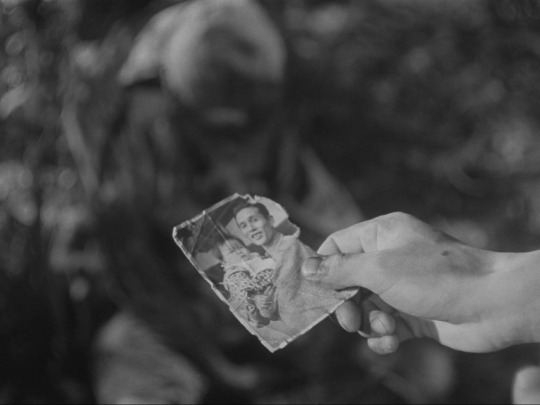


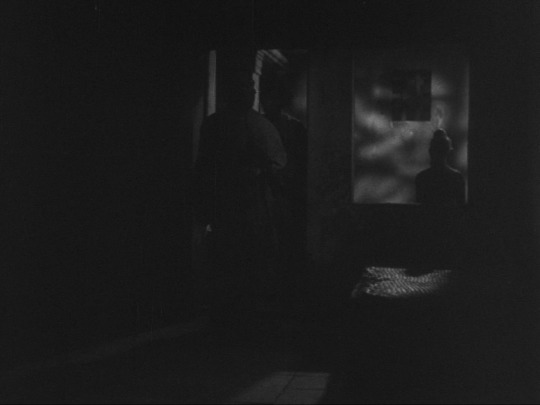
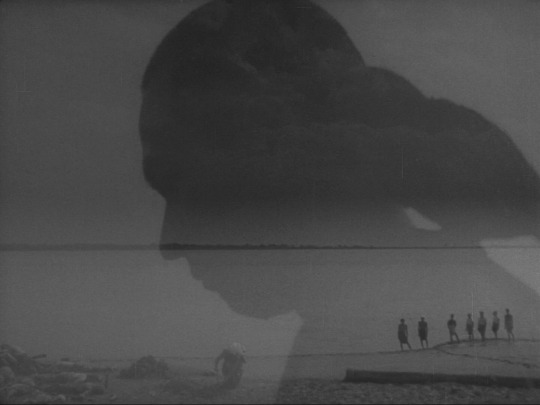
Kon Ichikawa
- The Burmese Harp
1956
127 notes
·
View notes
Text

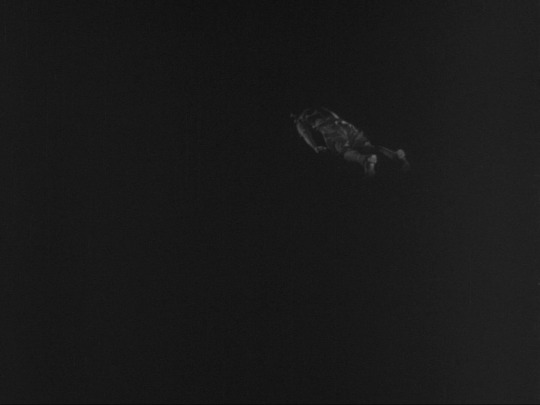
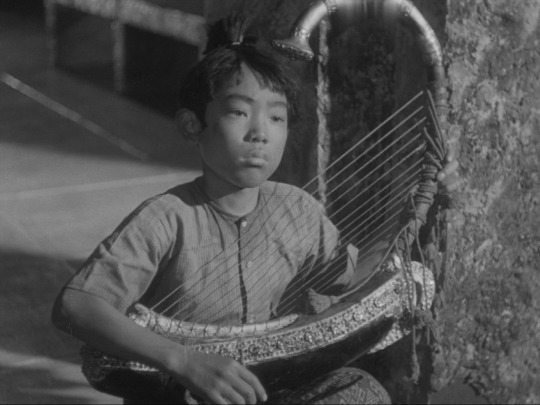

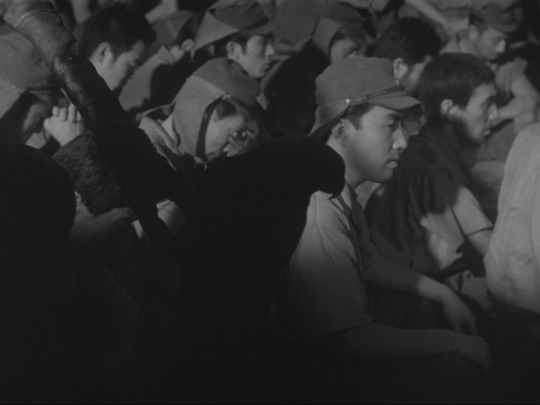
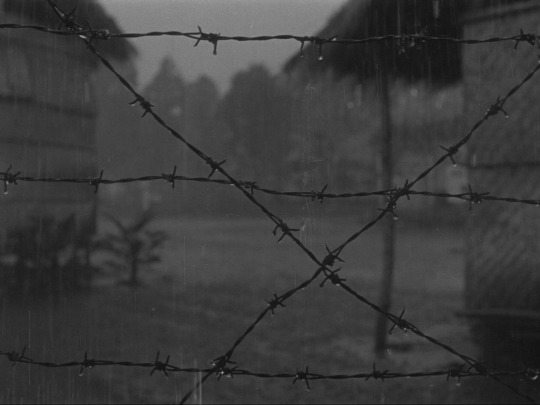

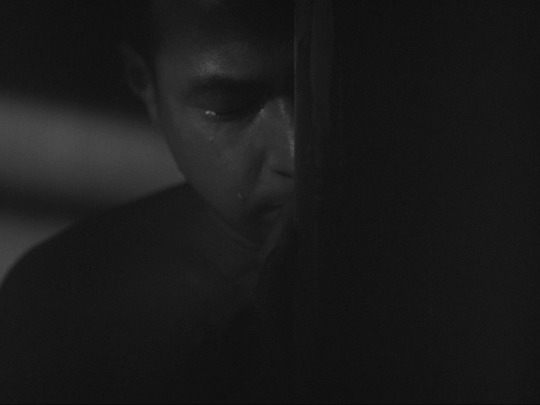

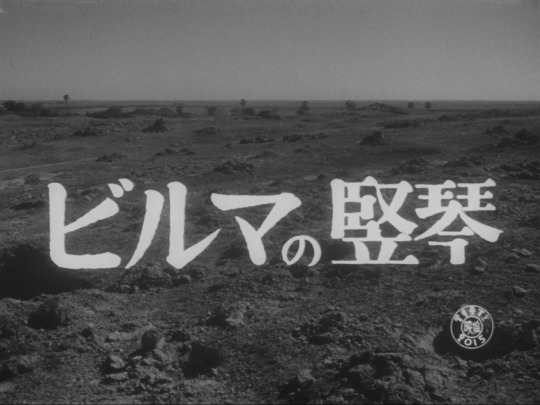
"The armies of Britain and Japan can come and fight all the wish. Burma is still Burma. Burma is the Buddha's country."
ビルマの竪琴 (Biruma no Tategoto / The Burmese Harp), 1956.
Dir. Kon Ichikawa | Writ. Natto Wada | DOP Minoru Yokoyama
10 notes
·
View notes
Text

Lyra
2 notes
·
View notes
Text










"You've made a weighty decision. How hard it must have been."
The Burmese Harp (1956) Directed by Kon Ichikawa Cinematography by Minoru Yokoyama
11 notes
·
View notes
Text
508 to go
The Burmese Harp (1956, dir. Kon Ichikawa): This movie made me cryyyy. It's not just the soldiers yearning to return home, or the healing power of music, or the way the group refuses to leave even one man behind, or reckoning with all that we've lost and how to move on from it while still paying our respects to the fallen... it's all of it and also those adorable talking parrots.
Anatomy of a Murder (1959, dir. Otto Preminger): I worried for the first half that the subject material might not be treated with the care and respect needed. I'm so sorry for doubting you, Mr. Preminger.
Johnny Guitar (1954, dir. Nicholas Ray): All I knew about this movie going in was that it featured Joan Crawford in a black shirt (as featured in one of my favorite documentaries, The Celluloid Closet) and honestly, that was enough to get me interested. I didn't expect such a volatile portrait of the damaging effects of repression or the beautifully melodramatic love story.
Hôtel Terminus: The Life and Times of Klaus Barbie (1988, dir. Max Ophüls): The closest comparison here is to Shoah but that's not exactly in this movie's favor. I admire Ophül's persistence and bravery but I wish this had been more focused, it didn't need to be 267 minutes.
That said, this documentary also consistently proves its importance with every interview subject who refuses to take accountability or who complains that atrocities that happened only forty years ago (still well in living memory!!) happened too long ago to be punishing its perpetrators now.
Tenet (2020, dir. Christopher Nolan): Convoluted, poorly structured, too long and lacking in characterization. It's honestly shocking to me to witness such, and I don't have another word for it, inept filmmaking from such an accomplished director.
Fatal Attraction (1987, dir. Adrian Lyne): All that drama over Michael Douglas? Girl.
Total Recall (1990, dir. Paul Verhoeven): Perfect action movie. Those practical effects are truly spectacular!
Weekend (1967, dir. Jean-Luc Godard): I'm actually kind of starting to dig how self indulgent Godard is with his philosophical and political rants. Of course, in this case the bizarre and violent surroundings help to balance it.
#1001 movies#the burmese harp#anatomy of a murder#johnny guitar#hotel terminus: the life and times of klaus barbie#tenet#fatal attraction#total recall#weekend
4 notes
·
View notes
Text

Shoji Yasui in The Burmese Harp (Kon Ichikawa, 1956)
Cast: Rentaro Mikuni, Shoji Yasui, Jun Hamamura, Taketoshi Naito, Shunji Kasuga, Ko Nishimura, Tomio Aoki, Tanie Kitabayashi. Screenplay: Natto Wada, based on a novel by Michio Takeyama. Cinematography: Minoru Yokayama. Film editing: Masanori Tsujii. Music: Akira Ifukube
No film that contains as many reprises of Henry Bishop's old parlor song "Home, Sweet Home" as Kon Ichikawa's The Burmese Harp does can escape charges of sentimentality. It's sung in both Japanese and English by male choruses accompanied by the titular harp -- which sounds a lot more like a full-size orchestral harp than the smaller Burmese saung that appears on the screen. But although the film contains scenes of the carnage of war, Ichikawa is clearly not aiming for realism here. The source of the film was a novel serialized in a children's magazine in 1946 that became an adult bestseller when it was published as a book. The book was designed as antiwar statement, a corrective to the militarism that had plunged Japan into disaster, and Ichikawa's film, which elaborates on the book's themes of Buddhist pacifism, still retains some of the power to stir sentiments in that direction. It focuses on Mizushima (Shoji Yasui), member of a company of Japanese soldiers led by Capt. Inouye (Rentaro Mikuni), who had been a music teacher before the war and tries to keep up morale as they trek through the Burmese jungle by having the men sing. Mizushima has found a harp and learned to play it extremely well, accompanying the singing as well as using the harp when he goes on reconnaissance missions, playing one tune for "all clear" and another for "danger." When the war ends, the company is sent to a temporary prison camp, from which Mizushima is sent out to try to persuade a recalcitrant group of Japanese soldiers that the war is over and they should surrender. The fanatics refuse, but Mizushima is unable to leave their hillside stronghold before the deadline passes and the place is shelled, killing most of the holdouts and leaving Mizushima unconscious. The company moves on, thinking Mizushima dead, and are about to be repatriated when they discover that he has survived. A flashback tells how Mizushima became a Buddhist monk, so devoted to the task of burying the Japanese corpses that still remained in the Burmese countryside that he refuses to return to Japan. The Burmese Harp is beautifully filmed by Minoru Yokayama, and became an international hit. There have been charges that the film "whitewashes" the Japanese campaign in Burma, ignoring atrocities committed under orders from the Japanese high command, and this criticism deserves to be heard. But the underlying antiwar fable of the film still holds its strength.
1 note
·
View note
Text
Biruma no Tategoto (The Burmese Harp) (1956)
After the WW2 armistice a group of Japanese soldiers sind their harp player to negotiate the surrender of another squad but he is lost and after being sent to a prison camp they wait for news of the companion they thought dead.
The subtext in this movie stands out as one of the better from Japanese live action cinema; the connection between music and the afterlife if poignant and makes for some good scenes in which religious iconography compliments the sometimes solomn, sometimes hopeful songs and tunes.
Only a few of the characters were distinguished enough to be relatable. The squad leaders are naturally seperated and given deeper back grounds but Mizushima is the most distinguished, however he’s too passive due to the effects of war for the audience to depend on as a source of relatability.
Several different interpretations of honour are demonstrated which makes for interesting discourse. Some believe surrender dishonours their country despite the country itself having surrendered, others suggest that having hope for their comrade’s survival is an insult to his spirit. This shows a complex culture with a mix of presumption and personal priorities, in addition to different representations on how to deal with grief and trauma, both individual and communal.
Although the ending was appropriate, it was fairly predictable as it follows the same basic rules as a fable. There’s a message bigger than a simple happy ending would be and to have them all sail of home arguably may have belittled the previous weight of their journey and suffering to get there, not to mention the implied debt Mizushima owed to the dead.
4/10 -It’s below average, but only just!-
0 notes
Text
thinking. about getting my eyes lasered. if possible.
1 note
·
View note
Text

The Burmese Harp (1956), dir. Kon Ichikawa
215 notes
·
View notes
Text
The 50 Best War Films of All Time

This is a tricky genre to try summarize, because of what each individual will choose to classify as a "war film", but I've done my best and tried to focus for the most part on stories set within the thick of actual warfare, rather than dramas taking place afterwards or behind the scenes, and except for a small number of impossible-to-ignore exceptions, very few comedies. Ranked and rated in loose order of quality, high-to-low:
Apocalypse Now (1979) ★★★★★★★★★★
All Quiet on the Western Front (1930) ★★★★★★★★★½
The Great Escape (1963) ★★★★★★★★★½
Ballad of a Soldier (1959) ★★★★★★★★★☆
Schindler's List (1993) ★★★★★★★★★☆
The Cranes Are Flying (1957) ★★★★★★★★★☆
The Boat (1981) ★★★★★★★★½☆
Saving Private Ryan (1998) ★★★★★★★★½☆
Catch-22 (1970) ★★★��★★★★½☆
The Last Bridge (1954) ★★★★★★★★½☆
The Deer Hunter (1978) ★★★★★★★★½☆
The Thin Red Line (1998) ★★★★★★★★½☆
The Killing Fields (1984) ★★★★★★★★½☆
Ice Cold in Alex (1958) ★★★★★★★★½☆
Lawrence of Arabia (1962) ★★★★★★★★½☆
The Bridge on the River Kwai (1957) ★★★★★★★★½☆
Wings (1927) ★★★★★★★★½☆
The Grand Illusion (1937) ★★★★★★★★½☆
Enemy at the Gates (2001) ★★★★★★★★☆☆
Three Kings (1999) ★★★★★★★★☆☆
Good Morning, Vietnam (1987) ★★★★★★★★☆☆
The Big Parade (1925) ★★★★★★★★☆☆
The Destiny of a Man (1959) ★★★★★★★★☆☆
The Bridge (1959) ★★★★★★★★☆☆
Army of Shadows (1969) ★★★★★★★★☆☆
Dr. Strangelove (1964) ★★★★★★★★☆☆
Full Metal Jacket (1987) ★★★★★★★★☆☆
The Burmese Harp (1956) ★★★★★★★★☆☆
Five Graves to Cairo (1943) ★★★★★★★★☆☆
Patton (1970) ★★★★★★★★☆☆
Napoleon (1927) ★★★★★★★★☆☆
The Wooden Horse (1950) ★★★★★★★★☆☆
Zulu (1964) ★★★★★★★½☆☆
Birdy (1984) ★★★★★★★½☆☆
1917 (2019) ★★★★★★★½☆☆
The Tin Drum (1979) ★★★★★★★½☆☆
Valkyrie (2008) ★★★★★★★½☆☆
The Human Condition I: No Greater Love (1959) ★★★★★★★½☆☆
The Human Condition III: A Soldier's Prayer (1961) ★★★★★★★½☆☆
M*A*S*H* (1970) ★★★★★★★½☆☆
Land of Mine (2015) ★★★★★★★½☆☆
The Hurt Locker (2008) ★★★★★★★☆☆☆
Gallipoli (1981) ★★★★★★★☆☆☆
Empire of the Sun (1987) ★★★★★★★☆☆☆
'71 (2014) ★★★★★★★☆☆☆
Born on the Fourth of July (1989) ★★★★★★★☆☆☆
Paths of Glory (1957) ★★★★★★★☆☆☆
Breaker Morant (1980) ★★★★★★★☆☆☆
Inglourious Basterds (2009) ★★★★★★★☆☆☆
Platoon (1986) ★★★★★★★☆☆☆

39 notes
·
View notes
Text
as a kaiju movie, godzilla minus one (2023) does everything it should and more. unlike many earlier godzilla films, where the themes and emotional arcs are functionally an excuse to show godzilla, godzilla functions as a way to illustrate the themes and emotional arcs; from a character standpoint, the film could almost completely narratively function without godzilla, which sets it head and shoulders over many of its peers. furthermore, godzilla’s presence from almost the first scene—vast yet not truly alien—establishes it not as a destructive intrusion from the future, as in films where godzilla is purely a metaphor for the nuclear age, but rather as an unwanted lingering of the past, a literalization of postwar cultural trauma and survivor’s guilt. however, whereas as a monster movie it takes a bold new stance, as a war movie it pulls its punches. placing the start of the movie at the hopeless end of wwii serves to shift the narrative from the national and nationalistic to the level of the individual (while also firmly placing the repercussions of imperialism and war crimes outside of the story’s scope), as also seen in the burmese harp (1956) and fire on the plain (1959). like those films, the presence of fantasy or magical realism replaces the presence of flesh-and-blood human foes, and, like the burmese harp (1956), the film adopts a very strong, at times heavy-handed, life-affirming message. and yet, for all the openly themed monologues, this film pulls its punches when it comes to its life-affirming, anti-war stance. the narrative only grants its failed kamikaze pilot redemption when he chooses to undergo a suicide mission; it only grants its kid too young to go to war maturity when he chooses to go to war. of course these themes of self-sacrifice come naturally to the collectivist narrative this film shares with most kaiju movies. despite this, the contrast of these arguments more suited to a war movie with the nominal themes of the film left a bit of a sour taste in my mouth even during its highly engaging final fight scene. all things told, godzilla minus one (2023) combines two genres rarely seen together in a deeply intriguing and in certain respects highly effective way, but the spaces in which it takes the easy way out leave points of weakness in the story that highlight the strength it could have had
#like. they could have committed to the bit. it wouldn’t have been easy but it would absolutely have been worth it.#anyways sorry for bringing two art films from the 50s into it i don’t watch much japanese wwii film#ryddles
26 notes
·
View notes
Text
The Burmese Harp

The Burmese Harp was a film in which I found similarities with Ugetsu. Specifically, the theme of critiquing the military’s use of bushido. This is most obviously present when Mizushima fails to convince the other Japanese troop in the mountain to surrender. Mizushima says blatantly that no good will be done by their deaths and that they are more useful aiding their war-torn country, something that Mizushima will soon dedicate himself to, but for Burma. The refusal of the soldiers to follow Mizushima is exemplary of the notion of honor in death as a warrior, and as we see with Mizushima being the sole survivor of that attack, their death was not honorable. They did not go out fighting, they were simply blown to bits once Mizushima’s time was up. The use of gore in this film was also very interesting. The close-up shots on the rotting corpses of soldiers and the number of piles of numerous dead bodies was something I was not expecting from this film. I believe this also goes to show the lack of honor in death. These men were killed and left to rot and be picked at by vultures. This promise of becoming an honorable warrior in death for Japan’s sake is put on blast, as we see how horrible and pitiful the death of these soldiers really was. Even the sergeant, before coming around to believing that Mizushima could be alive, says that to doubt his death is to dishonor his spirit. This saying that claiming a dead warrior is not truly dead would be disrespectful to the warrior who died honorably in battle.
Despite this critique, I couldn’t help but feel that the movie had a little too much empathy for the oppressor. There was almost no depiction of the crimes committed against the Burmese people, and the Japanese soldiers are all depicted as goodhearted men who only interact positively or neutrally with the native people. After reading more about Burma after the movie, this was certainly not the case in reality, and this depiction is relatively disrespectful to the events that did take place.
However, the overall message of the film is how war can change people, how music can be a powerful force to bridge the canyons created by war, and the duty of people in a postwar environment to ease these inevitable pains. To talk on the first point, Mizushima’s change in the movie is quite linked to nationality. Where he begins as Japanese, with a cheap harp, he slowly becomes one with the Burmese people, and his harp at the end of the movie is very fancy. His realizations of the horrors of war give him empathy with the Burmese people, but he also feels indebted to the Japanese soldiers left behind by their country. He feels he owes it to them to do better for them than their country did, and to do this, must turn to Buddhism and the people of Burma. The theme of music is one that I feel is strong at the beginning but loses its relevance for most of the film up until the end. Music obviously is the source of the comradery of the soldiers, but it also allows them to connect with the English troops at the start of the film too. That image of two opposing forces singing together was a strong one in the film. At the end of the film we see that Mizushima is still connected to his friends through music despite the changes he has undergone and the fact that he must leave them behind. Another gap between people created by war, they will always be connected by the music they shared. The final point about the cycle of war was something exemplified in the opening and closing shots of the landscape. The same quote about the soil and rocks of Burma being red appears, but at the end, Mizushima is there walking into the distance, where he wasn’t before. This cycle of war, blood, and red will always continue, as it seems man is doomed to do, but Mizushima’s purpose is to be there for his fellow man in these times and do all he can to ease that burden. He accepts that this cycle exists, acknowledges how awful it is, and dedicates himself to doing all he can in his power to help in the aftermath.
4 notes
·
View notes
Text
Light - The Path - probably the most extravagant prog rock album of the year
An album mixing progressive rock, jazz and classical, featuring 24 musicians and 112 instruments. Written by Camille De Carvalho, Auriann Rossard, Loup Vaillant & Paul-Henry Touzac Lyrics by Camille De Carvalho, Jeanne De Carvalho & Morgan Casseau Camille De Carvalho : Piano, Ondes Martenot, Korg CX3, Clavinet Pianet Duo, Berhinger Model D, Toy Piano, Vibraphone, Marimba, Glockenspiel, Melodica, Suzuki Andes Clarinets (sopranino, soprano, alto, bass, contrabass) Oboe, oboe d’amore, english horn, bass oboe Bassoon, tenoroon Saxophones (sopranino, soprano, alto, tenor, baritone) Duduk, guanzi, hulusi, bawu, Trumpets (piccolo, soprano, bass), flugelhorn, cornet Trombones (soprano, tenor) French horn, Baritone horn, Tuba Ocarinas (soprano, alto, tenor, bass, contrabass), recorders (sopranino, soprano, alto, tenor, bass), gemshorn Racketts (bass, great bass), cornett Morin khuur, Erhu Theremin, musical saw, Garrahand, Waterphone Udu, tam-tams, opera gong, hand gong, lunar gong, burmese gong, vibraslap, jingles, bells, guïro, triangle, bongos, temple block, ocean drum, tambourine, thunder box, claves, shakers Jeanne De Carvalho : lead singer, mezzo choir Morgan Casseau : lead singer, tenor choir Auriann Rossard : double bass, drums, bodhran, baritone choir Paul Ferré : electric 8-strings guitar, bass guitar, fretless bass guitar, contrabass guitar, bass choir Emmanuelle Marchaud : harp, alto choir Camille Sabathier : violin, viola, mandolin, alto choir Loup Vaillant : cello Caroline Kempf : flutes (piccolo, soprano, alto and bass) Paul-Henry Touzac : mixing and mastering Additional musicians : Timothé Bougon : acoustic guitar, banjo, bouzouki, lute, baritone choir Clément Gaudry-Santiago : acoustic 12-strings guitar, tenor choir Donnchadh Mullaghy : electric guitar Camille Montarou : timpani Camille Fabreguettes : flute Anaïs Rabary : soprano choir Lisa Chaïb Auriol : soprano choir Marion Nicolas : soprano choir Marie Le Pohon : mezzo choir Lisa Auneau : alto choir Audric Faucheux : tenor choir Valentin Jansen : bass choir Egon Zanne : bass choir Hangsvart : growl Artwork by Fennek Fox
6 notes
·
View notes
Text
The Burmese Harp
The Burmese Harp
A heartwarming tale that conflicts with reality is how I would describe this film. It begins following a company of Japanese soldiers a few days after the end of WW2, which they do not know. I applaud this start because it establishes the narrative and tone of the film quickly, and is quite interesting. Many of the soldiers are endearing and the captain is the definition of a leader. Their quirk is that the captain taught his group how to sing in choir together due to being a music college graduate, a very fun aspect of this film. The sincerity of the group's singing and the unique accompaniment of the harp set this film apart from any military film I’ve seen. Mizushima is our main character and he plays a Burmese harp.
Music is something this film is amazing, having my favorite score hands down so far in this class. There are scenes that have left a huge impression on me because of how intense and moving the music can be. An early scene that utilizes narrative music is when the company believes they are being ambushed by British forces, they sing and act joyful to fool their enemy. This is an attempt to make the British forces believe the company did not know they were there. The British sing back, a joyful beautiful song as the British soldiers slowly one by one walk out of their cover hugging one another, the company coming out in confusion. The music builds and the two sides do not fight, and that is when our main characters are informed the war had ended 3 days before. I love this scene and is one of my favorites I’ve seen in this class, it encapsulates the fact that we are all human regardless of our ethnicity or background. Music truly is the bridge to everyone.
I wish I loved the rest of the movie as much, I believe the message is nice in some ways. Mizushima is sent on a mission away from his group where only he survives and is struck with survivor's guilt. The rest of the film deals with his struggle with his guilt and the pain of reuniting with his friends and returning to Japan, which he ultimately decides not to do. He sees his fellow dead soldiers across Japan and it pains him to return home without paying his respects to every one of them, the film really tries to show that every soldier was a regular person with loved ones. And it is right in a way, there is a difference between the soldier and the country. It can even show how radicalized a soldier can be for their country when the Japanese soldier decided to die for their country. I find it hard to feel sympathy because they aren’t dying to protect their country, they are literally invading Burma. This is their country's fault for where they are…It's a good film with very good moments between the main cast of characters.

2 notes
·
View notes
Text
The Burmese Harp
Kon Ichikawa's The Burmese Harp was a neat film with themes involving the cruelty of war and brotherhood among soldiers. It starts off by showing a group of Japanese soldiers, who like to sing and play music, that are partaking in the Burma campaign. Eventually they are caught by British and Indian soldiers, where they soon find out that the war has already ended. After their capture, one of the soldiers, Mizushima, is sent to talk down another group of Japanese soldiers who are holding down a mountain. He fails, the mountain gets bombarded and he is the only survivor. A monk then takes Mizushima and helps him recover. Mizushima later steals his robes and tries to become a monk. During this time, his fellow soldiers are worried for him. Crossing a bridge they see a monk resembling Mizushima, but when they say his name he does not respond, leading them to believe it must have been someone else. As Mizushima walks towards Mudon to where his company was sent, he finds the corpses of many Japanese soldiers. Here is when Mizushima decides that he must stay in Burma, although we as the audience are not directly told this until the very end of the film when the troops are reading Mizushima's letter. Mizushima, clearly horrified at the scene of the many dead soldiers, turns back and this is where he encounters his friends while crossing a bridge. This was a very clever scene that was shown twice, first from the perspective of the troops, and then from Mizushima's perspective. Seeing it from his point of view makes you wonder why he is ignoring his comrades, but when we see captain Inouye look into the box left by Mizushima at the repository of the dead, there is a single ruby inside of it. Mizushima found it earlier and after being told that it represented the spirit of the dead Japanese soldiers, he put it in the box, signaling the start of his mission. It was very moving seeing the troops try to find Mizushima through singing and a parrot, especially when they finally find him and share a moment singing while he plays the harp.
On another note, this film definitely dances on a line when showcasing the presence of Japanese troops in Burma. There is an argument to be made for the film making light of the Japanese invasion, especially when the group of Japanese soldiers seem sweet and pleasant through their song and banter. I don't think the intention was to whitewash, but more so to demonstrate that soldiers in the frontlines were just regular people, drafted into war to further the vision of their government. This doesn't necessarily describe the entirety of the Japanese military, and Ichikawa shows this in the way he presents the intensity of the group of soldiers holding down the mountain. With that being said, The Burmese Harp was a great film and I can see why it was nominated in the Academy Awards of 1956.

2 notes
·
View notes
Text
The Burmese Harp by Kon Ichikawa - Blog 11
The Burmese Harp by Kon Ichikawa, is a 1956 film based on a children’s novel. It takes place during World War II on the battlefield between the Japanese and the British army. The story begins with a Japanese platoon who fight and sing along with their harp player and fellow soldier, Mizushima. After Japan surrendered to the British, the captain of the platoon asks Mizushima if he could head to the mountains to tell the rest of the Japanese soldiers to surrender to the British. When he gets to the site, he lets the British army know that the Japan surrendered and they agree to let Mizushima try to convince the rest of the Japanese soldiers to surrender in thirty minutes. To no avail, the mountain was bombarded and Mizushima was the sole survivor of the aftermath. After a monk helps recover his injuries, he steals his clothes and disguises himself as monk. Throughout his trip to Mudon to reunite with his platoon, he witnesses many corpses of the fallen Japanese soldiers and becomes traumatized. When his platoon asks him to return to Japan with him, he unfortunately tells them that he will not return to Japan with them. As for the reason, he tells them that he wants to stay in Burma until he buries all of the fallen soldiers. Until then he will return to Japan and hopefully reunite with them once again.
After watching the film, it ended on a very emotional note. It was a very good film and being able to see through the eyes of the soldiers during the war made it more touching. Although I had hoped that Mizushima would join his comrades back to Japan, I felt a lot of respect for him for wanting to bury all the soldiers in Burma. One of the characters I really liked was the working old lady. Despite her short memory, she was very smart as she was able to learn Japanese and talk to the soldiers. Her humor and kindness was adorable too. Her character reminded of my mother as she has short term memory, but always kind, giving, and silly to others.
The commentary that The Burmese Harp has on Japanese society is it reflects on the war. When Japan joined the war, it was influenced by their ideology of militarism and nationalism. In response, it led to many casualties in exchange for Japan’s ambitions at the time.
The director, Kon Ichikawa, uses wide shots to create meaning in his film. His wide shots are used to show the feeling of isolation during the Burma war through the scenes of the environment. An example of this is where the platoon is in the jungle in the beginning of the story. They go through the foliage in search of Mizushima in response to his signal on the harp. The wide shot is the vast nature surrounding the soldiers in an unfamiliar environment
2 notes
·
View notes